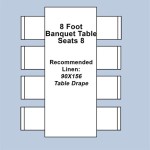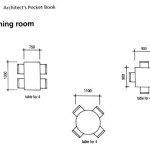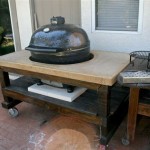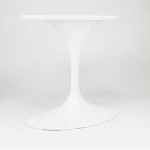How to Refelt a Slate Pool Table
Refelting a slate pool table is a meticulous process requiring patience, precision, and a moderate level of skill. While professional installation is always an option, understanding the steps involved allows individuals with suitable aptitude to perform the task themselves. This article outlines a comprehensive guide to refelting a slate pool table, focusing on the techniques and considerations necessary for a successful outcome.
Before commencing the refelting process, it is crucial to gather the necessary tools and materials. These include new felt (typically a blend of wool and nylon), a staple gun (preferably pneumatic for consistent force), staples, a seam ripper or utility knife, a hammer, a measuring tape, a chalk line, adhesive (spray adhesive or contact cement), and a felt stretcher or specialized clamping tools. Protecting the surrounding area with drop cloths and ensuring adequate lighting are also essential preparatory steps.
1. Disassembly and Preparation
The initial stage involves disassembling the pool table to access the slate bed. This typically requires removing the pockets, side rails, and corner castings. Careful attention should be paid to the order of disassembly and the location of screws or bolts, as proper reassembly is crucial for table stability and playability. It is highly recommended to take photographs at each stage to aid in the reassembly process.
Once the rails and pockets are removed, the old felt needs to be carefully detached. Using a seam ripper or utility knife, gently lift the edges of the existing felt and begin to peel it away from the slate. In some cases, the felt may be glued down, requiring more effort and potentially the use of adhesive solvents (applied cautiously and in a well-ventilated area) to soften the glue. The goal is to remove the old felt without damaging the slate surface or leaving behind excessive adhesive residue.
After removing the old felt, thoroughly inspect the slate surface for any imperfections, such as cracks, chips, or dents. Minor imperfections can be filled with slate patching compound, ensuring a smooth and level surface for the new felt. Allow the patching compound to fully cure according to the manufacturer's instructions before proceeding. Clean the slate surface meticulously with a damp cloth and vacuum to remove any dust, debris, or remaining adhesive residue. A clean and smooth slate surface is paramount for achieving a professional-looking refelting job and optimal ball roll.
The rails must also have their felt replaced. This involves removing the old felt, cleaning the rail surface, and applying new felt. The process for the rails differs from the slate bed and requires stretching and securing the felt around the curved edges of the rails, ensuring a tight and wrinkle-free finish. The rail felt typically wraps around the underside of the rail and is secured with staples.
2. Cutting and Positioning the Felt
Accurate measurement and cutting of the new felt are critical for a proper fit. Measure the dimensions of the slate bed, adding several inches of extra material on all sides for stretching and securing. It's better to have too much felt than too little. Use a chalk line to mark the cutting lines on the felt, ensuring straight and accurate cuts. A rotary cutter or sharp utility knife is recommended for cutting the felt to minimize fraying.
Before applying any adhesive or staples, carefully position the felt on the slate bed. Ensure that the felt is centered and that the nap (the direction of the fibers) is oriented correctly. The standard convention is to have the nap running from the head of the table (where the break occurs) to the foot of the table. This orientation affects the ball roll, especially with spin shots. Once satisfied with the positioning, lightly tack the felt in place at a few points along the edges to prevent it from shifting during the stretching process.
The method of securing the felt to the slate can vary. Some prefer using spray adhesive to create a full bond between the felt and the slate. Others opt for a more traditional approach, relying primarily on staples along the edges, with minimal adhesive used to prevent slippage. The choice depends on personal preference and the type of felt being used. If using adhesive, apply it evenly to both the slate surface and the underside of the felt, following the manufacturer's instructions regarding drying time and application techniques. Be mindful of overspray and ensure proper ventilation.
3. Stretching and Securing the Felt
Stretching the felt evenly is crucial for eliminating wrinkles and ensuring a taut playing surface. Begin at one end of the table and gradually stretch the felt across the slate, working towards the opposite end. Use a felt stretcher or specialized clamping tools to grip the felt and apply consistent tension. Avoid over-stretching the felt, as this can distort the weave and affect the ball roll. The goal is to achieve a smooth, wrinkle-free surface without excessive tension.
As the felt is stretched, secure it to the underside of the slate table frame with staples. Position the staples close together (approximately 1-2 inches apart) and ensure that they are driven in straight and flush with the wood. Use a pneumatic staple gun for consistent and reliable stapling. If using a manual staple gun, apply even pressure to ensure proper staple penetration. Avoid stapling too close to the edge of the slate, as this can cause the wood frame to split or crack.
Pay particular attention to the corners of the table, as these areas often require more intricate stretching and folding. Carefully fold and tuck the excess felt at the corners, creating a clean and seamless finish. Secure the folded felt with staples, ensuring that the corners are smooth and free of wrinkles. Trimming excess felt around the edges can be done after the stapling process is complete. Use a sharp utility knife to trim the felt, leaving a small overlap that can be tucked under the frame for a neat appearance.
After securing the felt to the slate bed, the process of refelting the rails begins. This requires careful adhesion and stapling, ensuring the felt is evenly stretched around the curved edges of the rail. The excess felt is trimmed and tucked beneath the rail, creating a flush and visually pleasing finish.
Once the entire table surface is covered and secured, a specialized iron can be used to remove any remaining minor wrinkles or imperfections. This process requires a low heat setting and careful application to avoid damaging the felt. The iron should be moved in smooth, even strokes, following the nap of the felt. The heat helps to relax the fibers and eliminate any residual wrinkles.
Examine the entire surface of the refelted table under bright light. Look for any imperfections, loose staples, or areas where the felt is not properly adhered. Address any such issues promptly. This attention to detail will ensure a professional-looking and long-lasting refelting job.
With the felt stretched and secured, the pockets can be reinstalled. These are typically attached with screws or bolts. Ensure they are properly aligned and tightened securely.
Finally, the side rails and corner castings are reattached. This stage requires careful alignment to ensure the rails are perfectly parallel to each other and the playing surface is level. Use a level to check the alignment and make any necessary adjustments before fully tightening the screws or bolts. Reattaching the side rails requires a precise understanding of the original disassembly process and the correct torque for the fasteners.
Following reassembly of all components, the play surface is meticulously examined for any imperfections or areas that may impede the smooth roll of billiard balls. Slight adjustments to the felt tension or staple locations may be necessary at this stage.
Once satisfied, the table is ready for use. Regular brushing of the felt is recommended to remove dust and debris and maintain its optimal playing condition. Avoid placing heavy objects or spilling liquids on the felt, as these can damage the fibers and affect the ball roll.

How To Felt A Pool Table With S Wikihow

How To Refelt A Pool Table Easy Diy

Refelting A Pool Table An Exact How To Diy Guide

How To Refelt A Pool Table 8 Steps Install New Felt Pearson Cues

How To Refelt A Pool Table Bed And Rails

How To Refelt A Pool Table 8 Steps Install New Felt Pearson Cues

Pool Table Makeover Home With Krissy

Assembly And Refelt On An 8 Connelly Pool Table At The Air Force Academy Prep School
What Tools Are Needed To Refelt A Pool Table Quora

Pool Table Renovation Rogue Engineer








